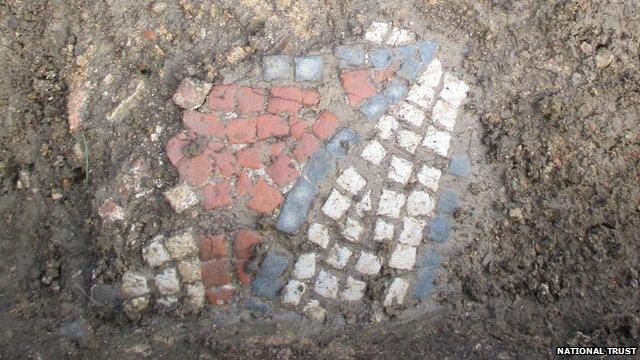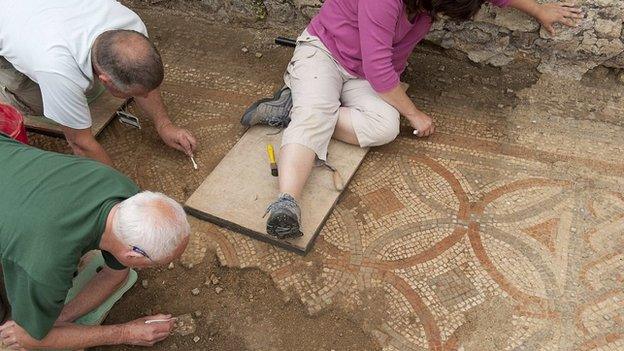Deer prints found on Roman roof tile at Chedworth villa
- Published

The deer footprints were made about 1,600 years ago
A deer hoof print has been found on a 1,600 year-old roof tile during a dig at Chedworth Roman Villa.
It was uncovered by archaeologists working in the villa's north range in Gloucestershire.
Other finds include two 4th Century Roman coins and a bone pin, and more of a mosaic which was first unearthed during a dig last year.
Experts said they had also found evidence of an earlier villa, beneath the 4th Century one.

Fragments of a floor mosaic have been discovered
National Trust archaeologist Martin Papworth said the tile was found in the changing rooms of the late Roman baths.
"The top tile that we came across had lots of imprints on it and we think that they're deer footprints.
"The tilers used to lay their tiles out to dry when they made them out of clay before they fired them and made them vulnerable to any animals walking around to put their prints on them.
"This looks like perhaps a Roe deer walked across and mucked up the surface of the tile, but it's quite nice to see it."

One of the coins discovered dates to about AD330 to 340
He said more of a mosaic, first unearthed last year, had been found.
"They had put concrete down in the 1960s to mark where walls had been found, and we expected there to be no mosaic there at all, but in the grassy islands between the concrete we found this amazing mosaic which had been missed in the 1960s.
"Now we know it was part of a great reception hall 18m (60ft) long by 6m (20ft) wide. It's really exciting. It's patchy, but there are some large parts of it [remaining]."
He added that one of the 4th Century coins featured a Chi-Rho early Christian symbol, and was likely to be from the first Christian Roman emperor Constantine the Great.
- Published28 August 2013

- Published28 July 2015

- Published19 August 2013
